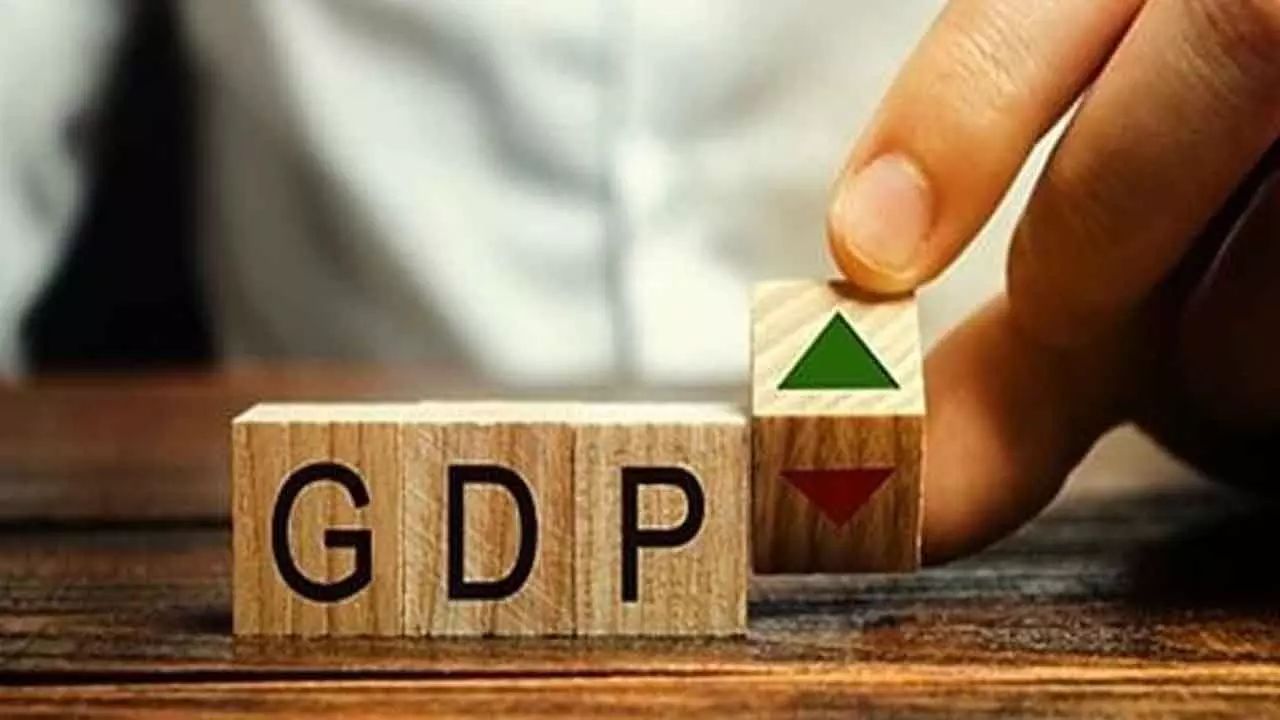Rising GDP Alone Won’T Lift Incomes
Despite overall growth, India's per capita GDP ($2,400) is currently lower than several African nations; Reforms needed to boost per capita consumption
Rising GDP Alone Won’T Lift Incomes

To sustain this growth momentum, India must focus on comprehensive economic reforms, diversify its export basket beyond IT and pharma to include sectors like textiles, electronics, and green technology, and strategically leverage urbanization and manufacturing competitiveness
According to the World Economic Outlook report released by the International Monetary Fund (IMF), India’s GDP is $4,187.017 billion ($4 trillion), surpassing Japan’s $4,186.431 billion. By 2028, India is expected to push its GDP to $5,584.476 billion to overtake Germany. China is the second-largest economy at $19,231.705 billion, while the US tops the list with a GDP of $30,507.217 billion.
Experts say this is not only a story of India’s ascent but also of Japan’s decline. In 2010, Japan had an economy of nearly $6 trillion, which has now shrunk to nearly $4.18 trillion, due to an aging population, stagnant productivity and long-running deflation. India, on the other hand, has doubled its nominal GDP in a decade to emerge as the fastest-growing economy.
Experts have also pointed out that India’s per capita GDP is equivalent to Japan’s in 1950s. Considering Japan stagnates, India would need 22 years to reach their level of per capita GDP.
India's growing GDP is significant because it indicates overall economic health and improvement in the quality of life for its citizens. A larger GDP generally translates to more job opportunities, higher incomes, and improved access to goods and services. Additionally, GDP growth influences policymaking, strengthens macroeconomic resilience, and boosts India's global standing.
The Indian economy continues to grow at a healthy pace despite challenging global conditions, according to World Bank’s latest India Development Update. But to reach its $1 trillion merchandise exports goal by 2030, India needs to diversify its export basket and leverage global value chains.
India’s per capita GDP in 2025 is around $2,400, which is below countries like Kenya, Morocco, Libya, Mauritius and South Africa.
India can boost its growth further by harnessing its global trade potential. In addition to IT, business services and pharma where it excels, India can diversify its export basket with increased exports in textiles, apparel, and footwear sectors, as well as electronics and green technology products.
To realize its ambition of becoming a developed nation by 2047, India must achieve an annual growth rate of 8 percent or more. Meeting this goal will require the government to implement comprehensive economic reforms to capitalize on geopolitical convergence, an approach Indian leadership seems hesitant to adopt.
Economists project India’s economic growth to average around 6.5 percent over the next few years, making it likely to maintain its status as the fastest-growing major economy globally, especially as China’s economic expansion slows down due to both internal and external factors. While reaching an 8 percent growth rate seems unlikely, it is also improbable for growth to dip below 6 percent.
Indian citizens are demanding reforms and policies that will boost GDP per capita by improving wages for India’s working class. Here are four ways that India could potentially boost its GDP per capita.
In India, 40% of the population works in agriculture and small-scale farming supports many poverty-level communities. The recently introduced 2020 Farm Acts will allow farmers to sell their products to the highest bidder, allowing them to seek higher incomes. When farmers are prospering, they support other sectors of India’s economy through their own consumption. Products like fertilizer, working attire and tools are necessary for farmers, especially as they expand their business. This increase in expenditure directly creates jobs for others.
This year, incomes have declined for Indian citizens, meaning private consumption has also decreased. By spending money on building and repairing roads and bridges, the government will provide citizens with greater ease and efficiency in their work and create jobs in construction. Furthermore, by using more funds to pay higher salaries, private consumption will once again increase, promoting higher business investment and improving the market for imports and exports.
Urbanization drives economic growth, and moving some of these farmers to cities would allow them to get jobs in manufacturing. Not only would this increase agricultural productivity by decreasing the number of farmers using the same amount of land, but it would help grow some of India’s medium-sized cities into more prominent urban landscapes. In addition, new urban populations would create a resurgence of the housing market and give banks more lending opportunities.
India has the opportunity to create as much as $1 trillion in economic value by establishing itself as a competitive manufacturer of electronics, chemicals, textiles, auto goods and pharmaceuticals. Currently, the country’s imports constitute a greater percentage of global trade than its exports. By increasing competitiveness in these sectors, India would not only increase its potential for exports but also decrease its reliance on imports, curbing the amount of money spent by citizens on foreign products.

